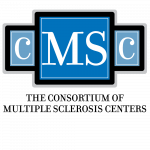Background:
Patients with relapsing-remitting multiple sclerosis (RRMS) often experience disease activity despite receiving a disease-modifying therapy (DMT). The Phase IIIb CASTING study (NCT02861014) evaluated the efficacy/safety of ocrelizumab (OCR) in patients with RRMS who had a suboptimal response to ?6 months treatment with 1 or 2 prior DMTs.
Objectives:
To evaluate CASTING 2-year safety outcomes by subgroups, including age and prior DMT.
Methods:
Patients (N=680; Expanded Disability Status Scale score ?4.0; discontinued prior DMT due to suboptimal response) received intravenous OCR 600 mg every 24 weeks for 96 weeks. Safety outcomes included adverse events (AEs), serious AEs (SAEs), AEs ?Grade 3, discontinuations for AEs, infections, serious infections (SIs), and lymphocyte count.
Results:
Safety outcomes were comparable between patients with 1 prior DMT vs 2 prior DMTs (% of patients with an event): AEs, 89.3% vs 88.8%; SAEs, 7.5% vs 6.7%; AEs ?Grade 3, 11.9% vs 11.9%; AEs leading to discontinuation, 1.2% vs 0.7%; infections, 67.6% vs 65.8%; SIs, 1.9% vs 1.1%. Safety outcomes were also comparable between patients aged ?40 years vs >40 years (% of patients with an event): AEs, 88.8% vs 89.9%; SAEs, 7.4% vs 6.5%; AEs ?Grade 3, 11.4% vs 13.6%; AEs leading to discontinuation, 1.4% vs 0%; infections, 66.3% vs 68.6%; SIs, 1.8% vs 1.2%. Last DMT before OCR had little impact on the safety outcomes (% of patients with an event [interferons vs glatiramer acetate vs dimethyl fumarate vs teriflunomide vs fingolimod]): AEs, 87.4% vs 89.7% vs 91.7% vs 92.3% vs 86.0%; SAEs, 8.1% vs 9.5% vs 3.6% vs 12.3% vs 6.2%; AEs ?Grade 3, 11.6% vs 11.2% vs 11.9% vs 18.5% vs 10.1%; AEs leading to discontinuation, 1.0% vs 1.7% vs 1.2% vs 1.5% vs 0%; infections, 66.2% vs 68.1% vs 69.0% vs 67.7% vs 62.8%; SIs, 2.0% vs 0.9% vs 1.8% vs 3.1% vs 0.8%. At Week 96, median (range) lymphocyte count (x109/L) was comparable between patients with 1 prior DMT (1.60 [0.393.60]) vs 2 prior DMTs (1.57 [0.693.51]), patients aged ?40 years (1.60 [0.693.60]) vs >40 years (1.50 [0.393.07]) and last DMT before OCR: interferons (1.64 [0.393.30]); glatiramer acetate (1.63 [0.703.60]); dimethyl fumarate (1.58 [0.702.97]); teriflunomide (1.71 [0.803.51]); fingolimod (1.34 [0.693.10]). No hematological abnormalities were seen in patients treated with OCR, regardless of previous DMTs or age.
Conclusions:
The safety profile was comparable between subgroups, including age and number/type of prior DMTs. No new safety signals were identified.
[learn_press_profile]
